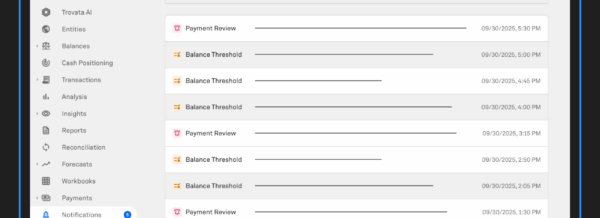After a period of relative stability, the markets are back to their old tricks again elevating corporate recession fears amidst a week of sudden volatility. Stocks closed deep in the red for a second day in a row on Monday as questions swirl over whether the US economy is in a recession following Friday’s unexpectedly weak jobs report.
As is often the case, investors have turned to those in charge of market stability for reassurance. Right now, the most likely lever to be pulled is by the Federal Reserve, with many investors hopeful this market uncertainty will push Fed officials to come to their rescue with a rate cut.
It’s worth noting that the Fed isn’t due to announce their next rate decision until September 18th. Those hoping for a rate cut before that date would need the Fed to see the need for an emergency rate cut. This is highly unlikely based on the market volatility we’ve seen this week. While they’re the biggest swings we’ve seen since 2022, it’s almost certainly within the realms of what the Fed would consider normal.
But for treasurers, that’s not to say there aren’t causes for concern. There’s a lot of risk around right now, with these market jitters only adding to an already complex picture. So with that in mind, how can you navigate the current climate? What does this mean for your organization’s cash flow, and what should you prioritize to be prepared for uncertainty ahead?
That’s exactly what I’m going to cover in this article. Because as every good treasury and finance professional knows, failing to plan is planning to fail.

Why is the Stock Market So Volatile Right Now?
There’s been no single catalyst for the recent stock market volatility. Instead, it’s been driven by a range of factors, including a disappointing jobs report, the ever present fears of a recession, and substantial volatility in the Asian markets.
The volatility was initially triggered by a weaker-than-expected jobs report released last Friday. The U.S. economy added only 114,000 jobs in July, significantly below the forecast of 185,000, and lower than the 179,000 in June. Those June and May figures were also revised downwards.
These numbers meant the unemployment rate climbed to 4.3%, its highest level since the COVID-19 pandemic. This disappointing jobs data heightened fears of an economic slowdown, with Monday experiencing the biggest one day drop in markets since late 2022.
However, the market showed resilience the following day. On Tuesday, the Dow Jones rebounded by 407 points, or about 1%, while the S&P 500 and Nasdaq Composite also gained over 1% each.
After this initial rebound, stocks have experienced continued volatility throughout the week, as recession fears remain a significant concern. The combination of weak economic data and global economic uncertainties is keeping investors on edge. To cap off the rollercoaster week, markets rallied hard on Thursday to notch their biggest single day gain since 2022.
Talk about whiplash. But even though the bounce is good news, it highlights a key trend in the markets which is sure to make many treasury and finance professionals nervous. Uncertainty.
What Market Volatility Means for Businesses
Because while the volatility of global stock markets can cause plenty of panic and anxiety, does it really impact the day to day work that treasury and finance teams do? Well, yes and no. While market volatility in isolation isn’t likely to have much of an impact, it’s generally a symptom of something else.
In this case, concerns over the general state of the economy. And that is something that treasurers and finance teams definitely do need to worry about.
Businesses need to look beyond the market performance itself, and instead consider whether the same things that are causing upheaval on Wall Street, could cause it for their financial results.
Is This Volatility a Sign of Things to Come?
You already know the real answer to this is, ‘no one knows for sure.’ However, the possibility of a recession in the next 6-12 months is a big concern among economists and analysts. The weak jobs report from July, coupled with increasing unemployment rates, indicates a slowing economy.
The “Sahm Rule,” an unemployment based recession indicator which has, so far, never been wrong, has been triggered, suggesting the early stages of a recession. We’re also seeing shrinking manufacturing activity and disappointing corporate earnings, particularly in the tech sector.
The Federal Reserve has kept interest rates at a 23-year high, but there are growing expectations that it may begin to cut rates if economic conditions continue to deteriorate.
So, in plain English, we’re seeing a continuation of the slow deterioration in economic conditions that has been occurring for some time now. Until we start to see some significant rate cuts, we’re unlikely to see the end of the bumpy ride.
Which begs the questions, what should treasury and finance teams do about it?
How Treasurers Can Respond to Corporate Recession Fears
Well, to start with, it shouldn’t only be about responding. As I’ll go into soon, the best way to navigate challenging or volatile times is to have a plan for before they happen. But whether you’re facing a scenario you’ve already considered, or something totally unexpected, navigating through market volatility and economic uncertainty requires strategic planning and robust financial practices.
Here are some of key steps treasurers and finance professionals should take to ensure their organizations are well-prepared to handle the current economic climate, as well as any others that may arise in the future.
Understand This is Nothing New
Arguably the most important thing to understand is that volatility and uncertainty is nothing new. If the COVID-19 pandemic showed us anything, it’s that none of us can accurately predict the next crisis.
What we can do is have confidence that organizations can get through very challenging times, and that, at some point, things will improve.
Optimize Cash Management
But in order to get to those better days, the business needs to be resilient enough to survive. That comes down to cash flow. It’s the lifeblood of any business, and efficient management of it is an absolute necessity when navigating uncertain conditions.
There are a number of different aspects to this:
Cash Forecasting and Scenario Planning
Accurate cash flow forecasting is an incredibly important tool in managing cash. By developing detailed cash forecasts, you can better understand your cash flow needs and identify potential shortfalls. This allows for better planning and resource allocation.
Scenario planning takes this a step further. Creating multiple scenarios based on different economic conditions can help you anticipate potential impacts on cash flow based on a range of different assumptions. This helps in making informed decisions and preparing for various outcomes.
Liquidity and Cost Management
Maintaining sufficient liquidity reserves to cushion against unexpected financial shocks is a must, acting as a last line of defense when cash flow is impacted. This includes having access to lines of credit and other short-term financing options.
Cost-control measures can also be a useful tool to preserve cash. This can involve renegotiating contracts, delaying non-essential expenditures, and optimizing operational efficiency.
Audit Processes
Inefficient processes slow you down and make it harder to be agile when quick changes need to be made.
To get ahead of this, conduct a thorough audit of your financial processes to identify inefficiencies and areas for improvement. Start by examining manual workflows. Assess if your team is spending excessive time on tasks like logging into multiple bank portals and conducting manual data aggregation. This is the type of task that can be automated to not only save time, but decrease errors.
High error volumes in financial reporting and transactions can be costly, so identifying the root causes of these errors and implementing solutions to minimize them can be hugely beneficial.
The less manual your processes, the more agile you’ll be in the face of a crisis.
Update Your Tech Stack
But automation and making processes as efficient as possible can’t happen without the right tools. Outdated technology can be a drag on efficiency, and necessitate that manual work.
The key is to evaluate your current systems and consider upgrading to more advanced solutions, before it becomes a problem. Start by assessing whether your Treasury Management System (TMS) meets your current needs, as legacy systems might lack the necessary functionality and integration capabilities for modern treasury operations.
Exploring new treasury management options that offer real-time visibility, advanced analytics, and better integration with other financial systems can transform your operations for the better.

Embrace Digital Transformation
With the right tools in place, you can overhaul the way treasury and finance works within your organization. It can take them from being a team focused on data gathering and historical record keeping, to becoming a true strategic partner for the business.
Digital transformation enables this through:
Real-Time Cash Visibility
The right modern treasury software offers a centralized data lake which provides a single source of truth for all of your financial data. This enables quicker decision-making and better cash management, eliminating the need to source information from multiple banking portals.

With all of this data gathering automated through the use of APIs and other direct banking connections, manual workloads are reduced and accuracy increases.
Automated Reporting
As well as the ability to organize this data into customized dashboards, it’s also possible to automate the generation of financial reports to save time and reduce the risk of errors. This allows your team to focus on strategic analysis rather than manual reporting tasks.

Advanced Analytics
Because of the sheer amount of data that can be transferred via APIs, using modern treasury tools unlock advanced analytics and gain deeper insights into their financial data. In practical terms, more information means making more informed and, hopefully, better strategic decisions.

By leveraging advanced analytics, organizations can identify trends, detect anomalies, and predict future financial performance with greater accuracy. These insights allow treasurers to optimize cash flow, manage risks more effectively, and improve overall financial health, transforming raw data into actionable intelligence that drives business success.
Sophisticated Forecasting Tools
There’s really no better way to plan for uncertain events than by forecasting them and assessing how your company will be likely to respond. These tools enable treasurers to model different outcomes and assess the potential impact of external factors on their cash flow and financial position.

With sophisticated forecasting, organizations can prepare for a range of future possibilities, so that they remain agile and resilient. It’s the closest thing to a crystal ball you’re going to get.
Enhance Organizational Resilience with Trovata
Trovata empowers your organization to be prepared and ready for any economic eventuality. Trovata provides real-time cash visibility, automates complex financial processes, and delivers actionable insights that enhance decision-making. Combined with advanced analytics and sophisticated forecasting tools, you can equip your treasury team with the tools they need to survive and thrive at any stage of the business cycle.

If you’d like to learn more about how Trovata can level up your treasury and finance function, book a demo today.




